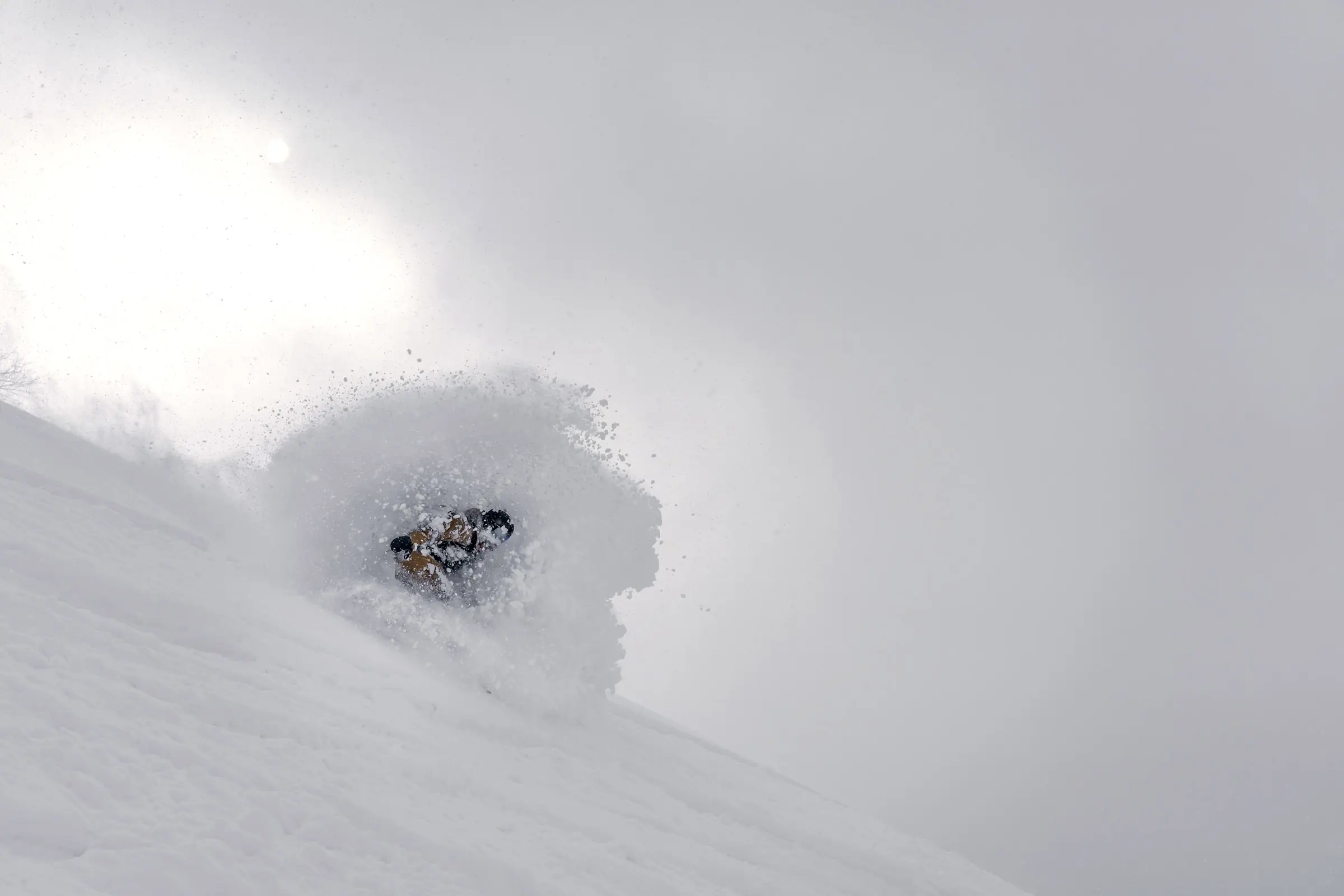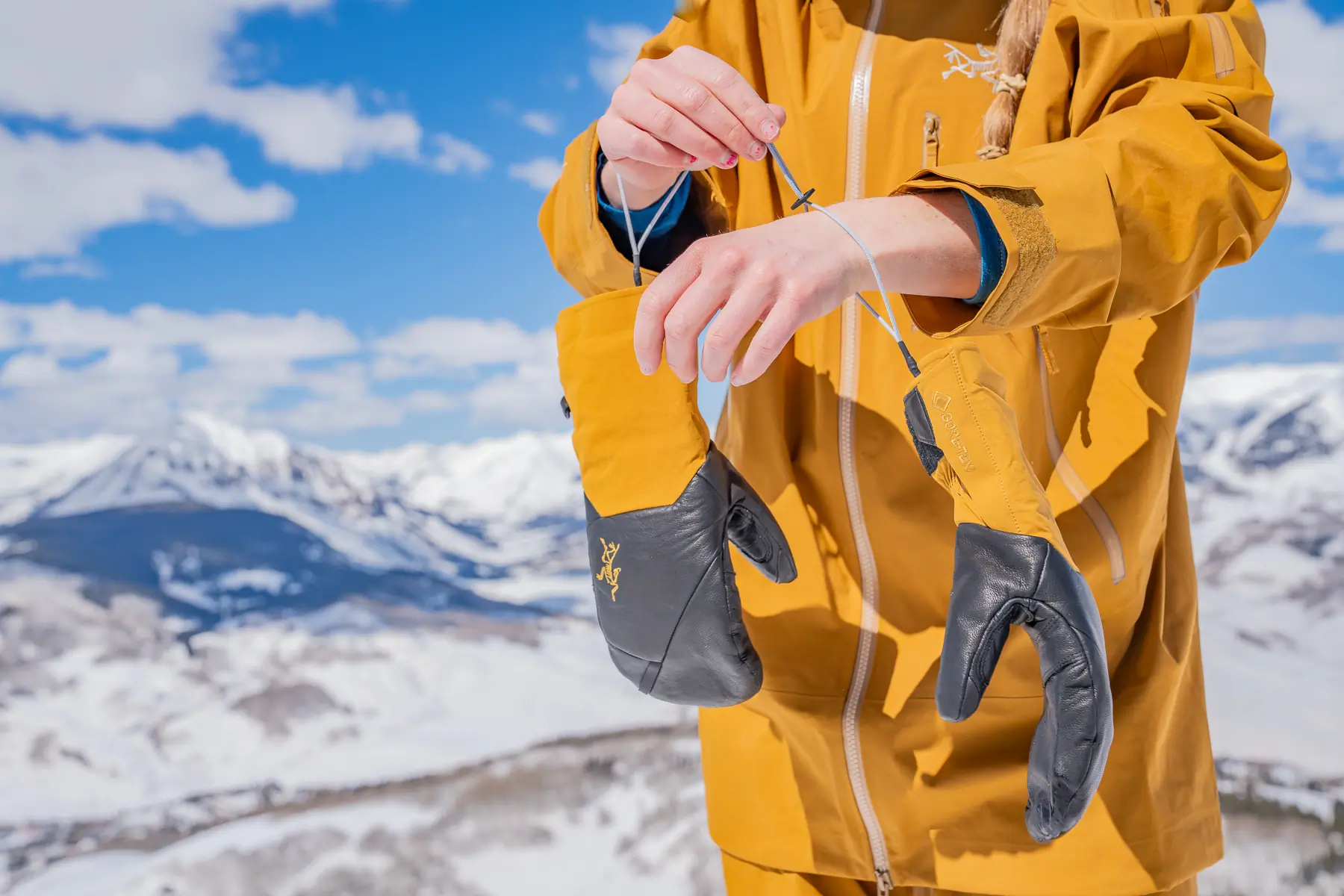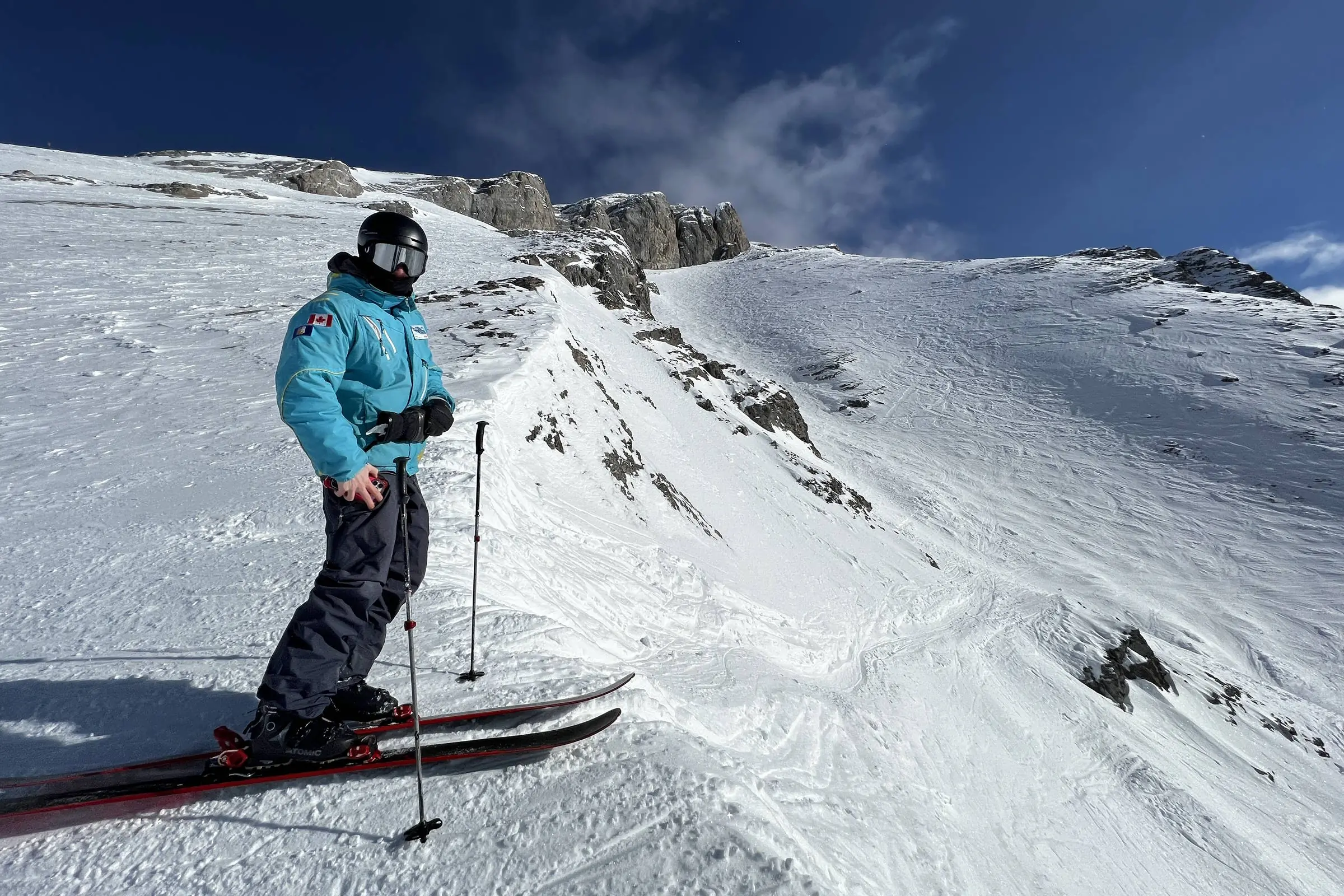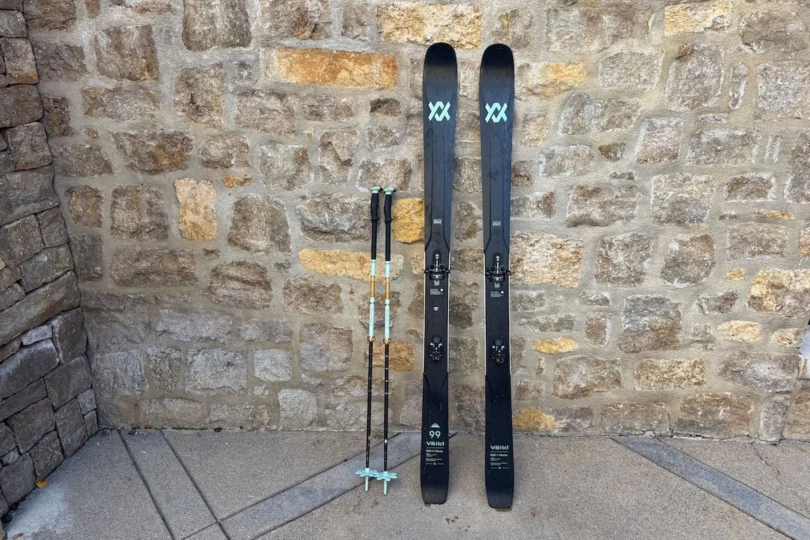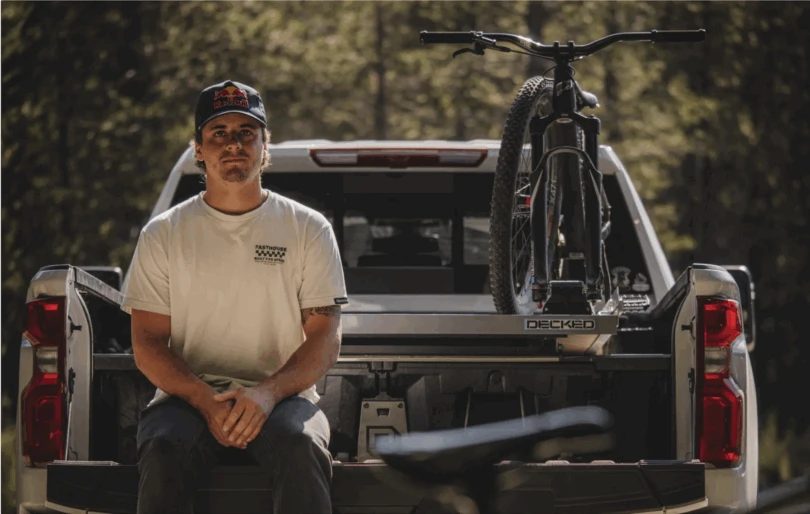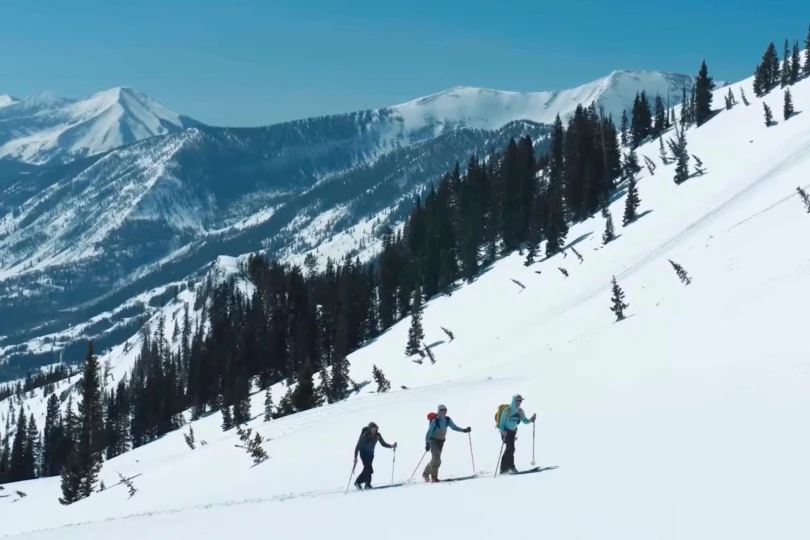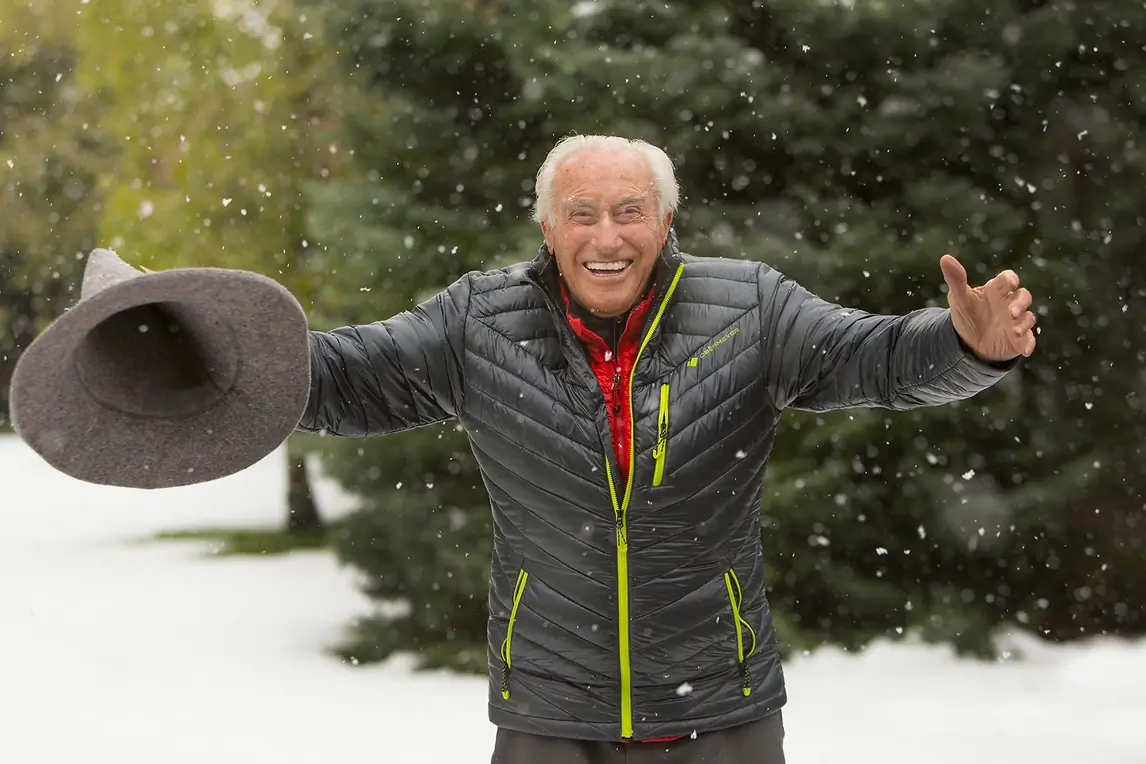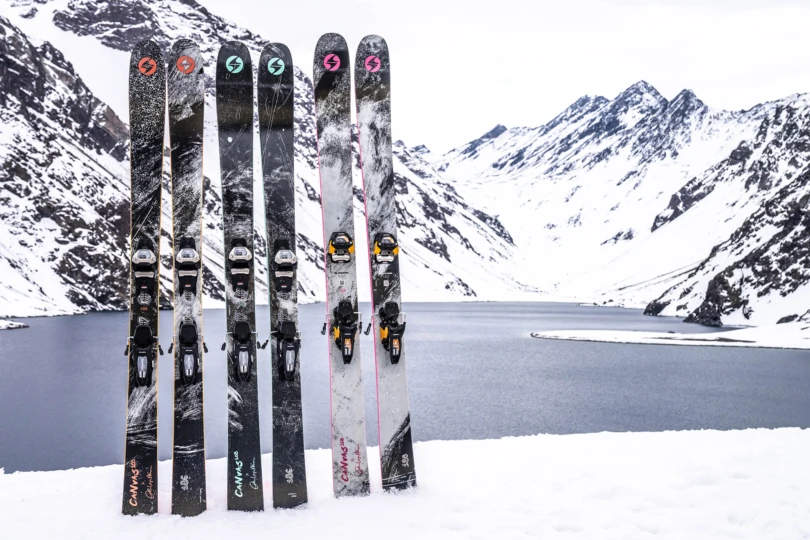The Japanese word “oyuki” translates to “big snow,” and it’s the perfect descriptor of what I’ve found to be some of the highest-quality, most consistent, and deepest powder I’ve ever ridden. (Oyuki is also the name of a Hokkaido-based ski brand, coincidentally.) The more common “Japow,” a mashup of “Japan” and “powder,” is also spot-on.
If such a powder pilgrimage sounds like your dream ski trip, you’re in the right place. In this article, I’ll break down everything you need to know to plan a successful shred trip to Niseko, a world-famous Hokkaido hub located 100 km south of Sapporo, Japan.
Below, I’ll cover trip timing, resort locations, inbounds and backcountry riding options, hotels, restaurants, rental gear, trip logistics, and more.
Planning a Winter Trip to Niseko, Japan
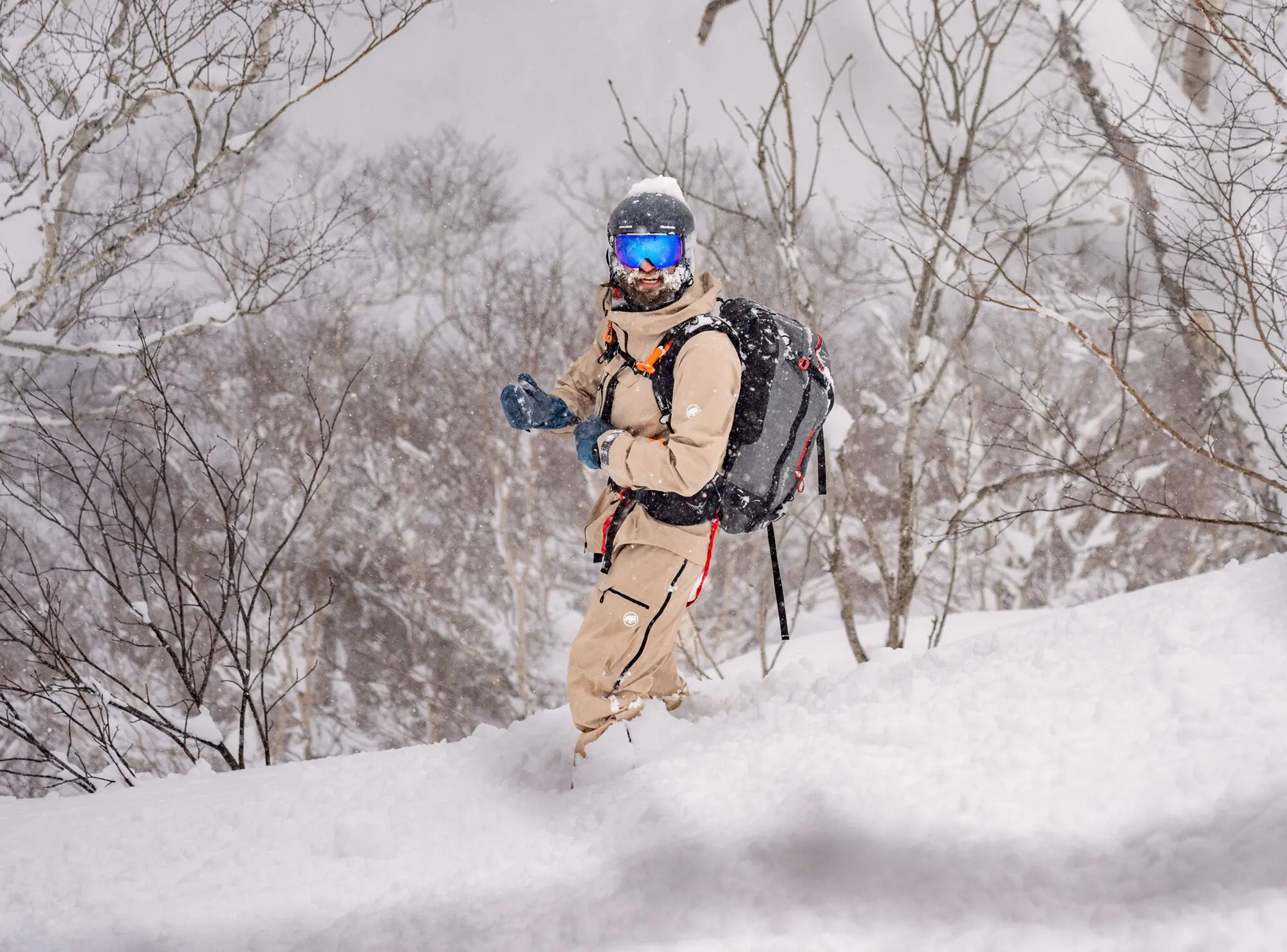
When to Visit
Powder is plentiful in Hokkaido thanks to a mix of meteorological magic. Northwest winds transport icy air from Siberia over the relatively humid Sea of Japan, churning up storms that smack into the precipitous peaks of the archipelago. The result? Oyuki! We’re talking knee-deep, thigh-deep, and occasionally chest-deep powder. The best time to visit is similar to North America’s ski season: December through February.
The busy season: Your best chance of scoring these classic “Japow” conditions falls in January and early February. However, as I mentioned earlier, Hokkaido is no secret, and Niseko is the most famous and frequented ski destination on the island. Expect crowds at resorts, busy restaurants, and peak season hotel pricing during these windows.
The slightly less busy season: If you’d prefer to gamble a bit to avoid the crowds or keep costs more affordable, try pre-holiday December or March. You do risk missing out on classic conditions, but if there’s a resort powder day, you’ll be elbow-to-elbow with significantly fewer powderhounds.
Getting to Niseko
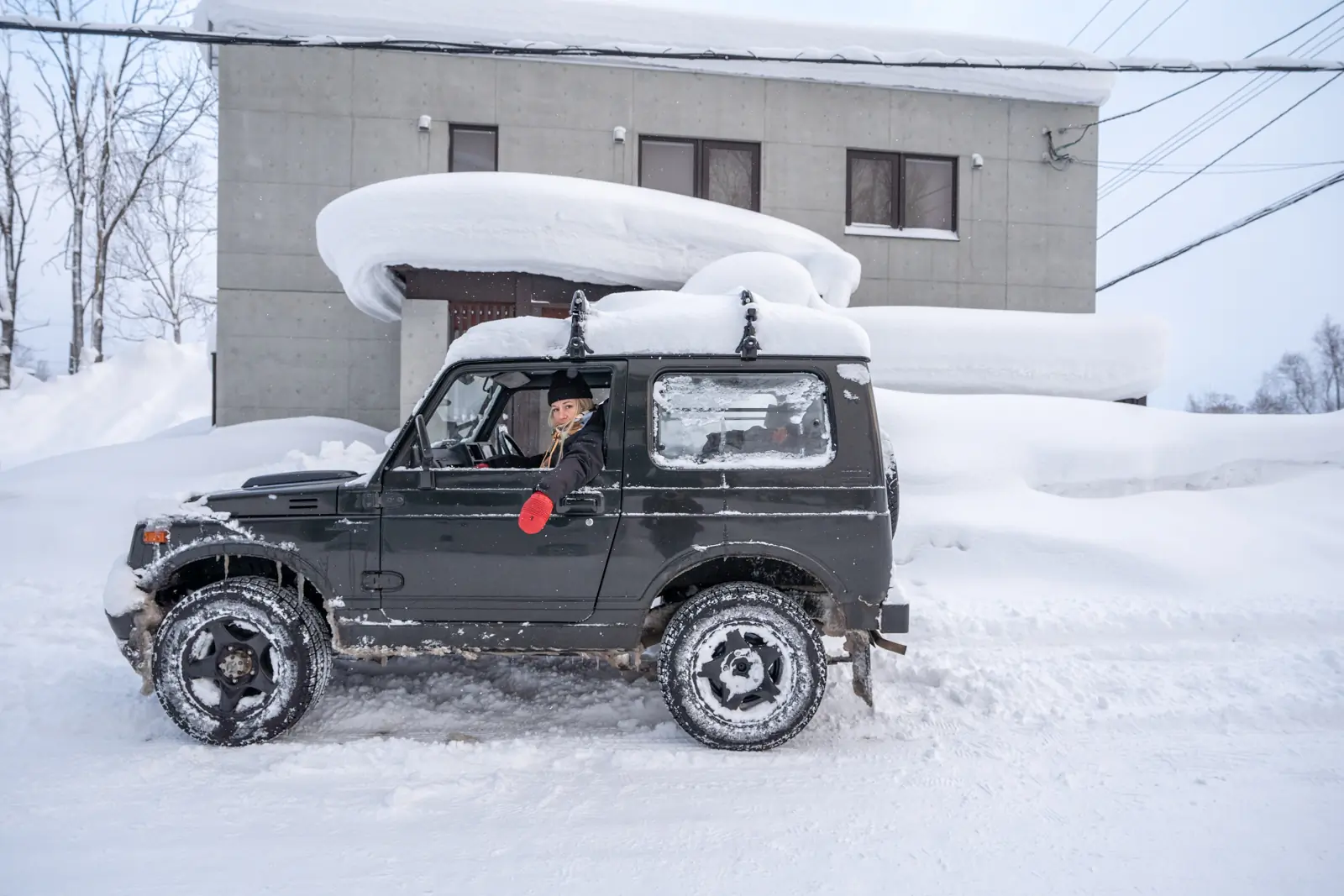
Getting to Niseko is fairly straightforward. If you want to get straight to the shred, the easiest way to get there is to fly into Sapporo. Then, you’ll want to rent a car, grab a taxi, or book a bus. If you’d like to extend your trip with a few days in Tokyo, fly to Tokyo, and then take a train or fly into Sapporo.
From Sapporo, I highly recommend renting a car, as it makes exploring other resorts and visiting backcountry trailheads much easier. I’ve explored Niseko with a car and without a car, and the former is much more rewarding. Buses are frequent and much cheaper than taxis, making them our second pick.
Where to Ride: 5 Must-Visit Resorts in Niseko
Niseko United
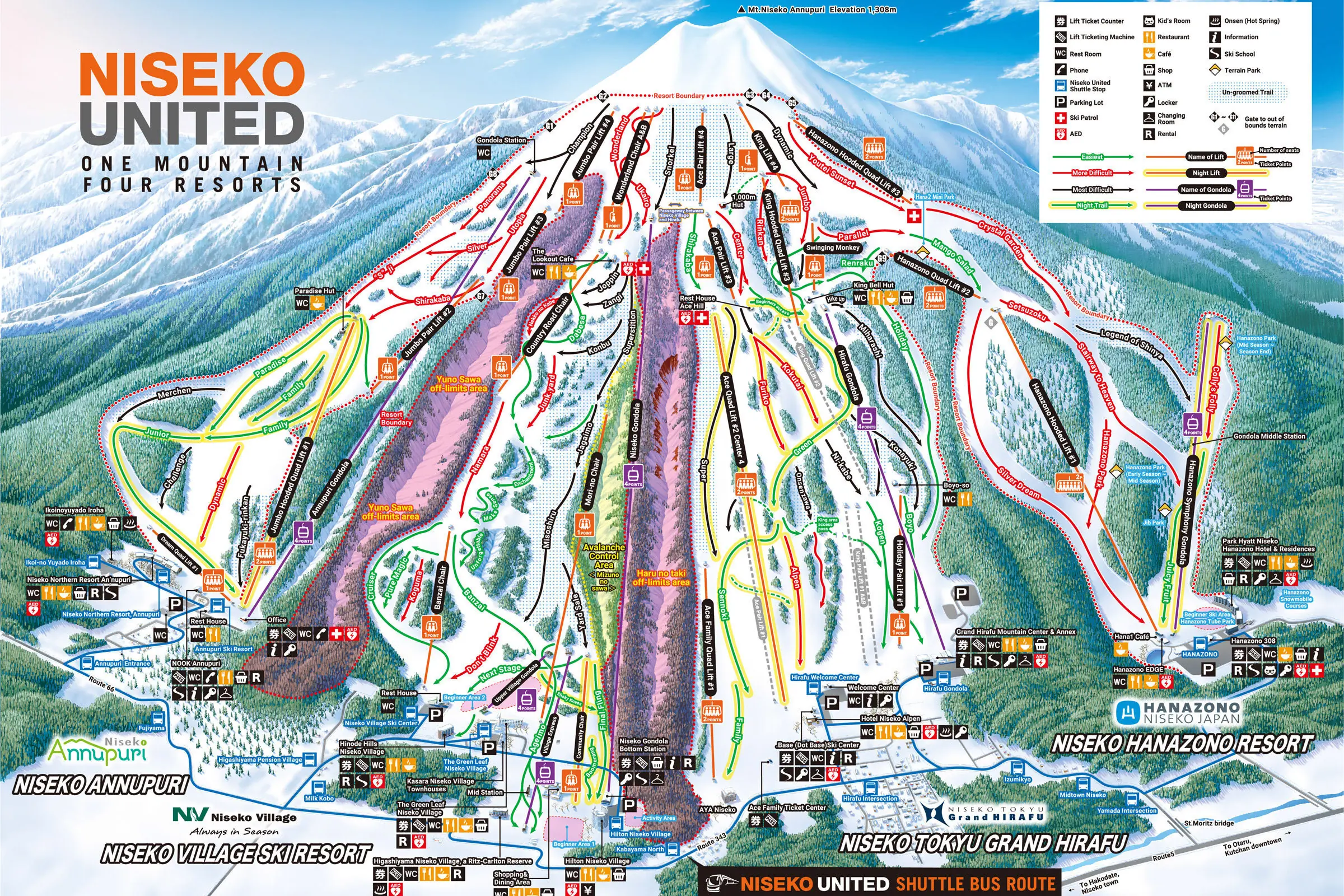



Much of Niseko’s magnetism stems from Niseko United, a massive conglomeration of four linked resorts that wraps around the flanks of the awe-inspiring, conically shaped Mt. Niseko-Annupuri. Not only is this resort utterly gigantic and blessed with high-quality terrain and snow, but it’s also on the Ikon and Mountain Collective Passes, making it an ultra-popular target destination for visiting skiers. Of course, there are pros and cons to mega-pass inclusion:
- Pros: It’s cheap and easy to access.
- Cons: It’s cheap and easy for everyone else, too.
Niseko United’s four resorts are, from the looker’s right to left, Hanozono, Grand Hirafu, Niseko Village, and Annupuri. Each resort has plenty of in-bounds shredding and a backcountry gate or two (referred to by the letter “G” and a number, as in G4, G5, etc.) on tap. Below is a snapshot of each resort.
Hanozono
Looking at a trail map, Hanozono seems like it sits next to its neighbor, Grand Hirafu. But if you look at a standard topo map, it becomes clear that the resort is more isolated. If you work your way over to Hanozono, plan to stay for a few runs. Or even better, the whole morning or afternoon to make the most of it. This is especially pertinent advice if you’re exploring the backcountry.
The lower slopes off of the hooded quad chairs offer mellow to intermediate groomers, but there’s magic in the trees. Powder stashes, mini pillows, and breathtaking glades are on tap if you’re willing to explore, both in bounds and out.
If you have your avalanche safety gear and know how to use it, explore out of the G9 gate, which is well below treeline. This is a rad option on storm days. If you’re blessed with better visibility and favorable avalanche conditions, you can make your way to the top of Hanozono and pop out of G5 into much more expansive gullies and backcountry bowls.
Finally, I haven’t done this yet, but Hanozono is also the launch point for Weiss Powder Cats, one of the few cat skiing backcountry options in the region.
Grand Hirafu
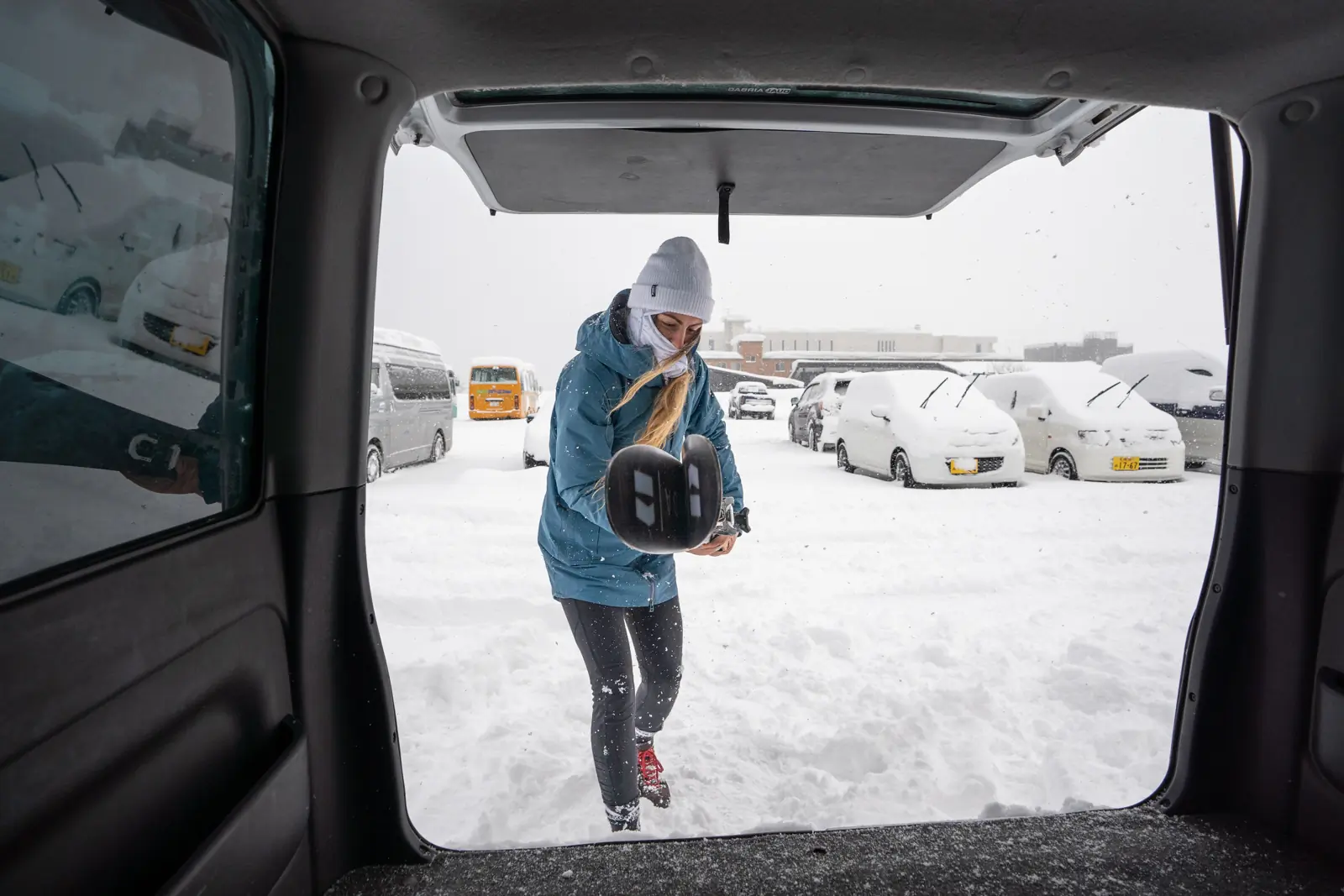



Compared to sleepy Hanozono, Hirafu is busier, with more chairlifts and more skiers using them. It also offers steeper terrain. On a storm day, getting first tracks looker’s left of the Ace Quad Lift #2 can make your entire Japan trip worth the cost of admission, as you’ll find pillowy features and steeper pow turns. Don’t push too far skier’s right, though, as the tempting valley that separates Niseko Village and Grand Hirafu is off limits.
Below treeline, Hirafu has groomers and tree-skiing for skiers of every skill level, and it’s a sweet zone to explore on storm days. However, when the visibility cooperates, the upper mountain is where it’s at. King Lift #4, a funky one-seater chair, brings skiers to the uppermost reaches of the Niseko United resort boundaries.
At this point, depending on avalanche conditions and gate openings, skiers will have a choice: head back down toward Annupuri, Grand Hirafu, or Hanozono, or continue on foot to the summit.
Skiing the Summit
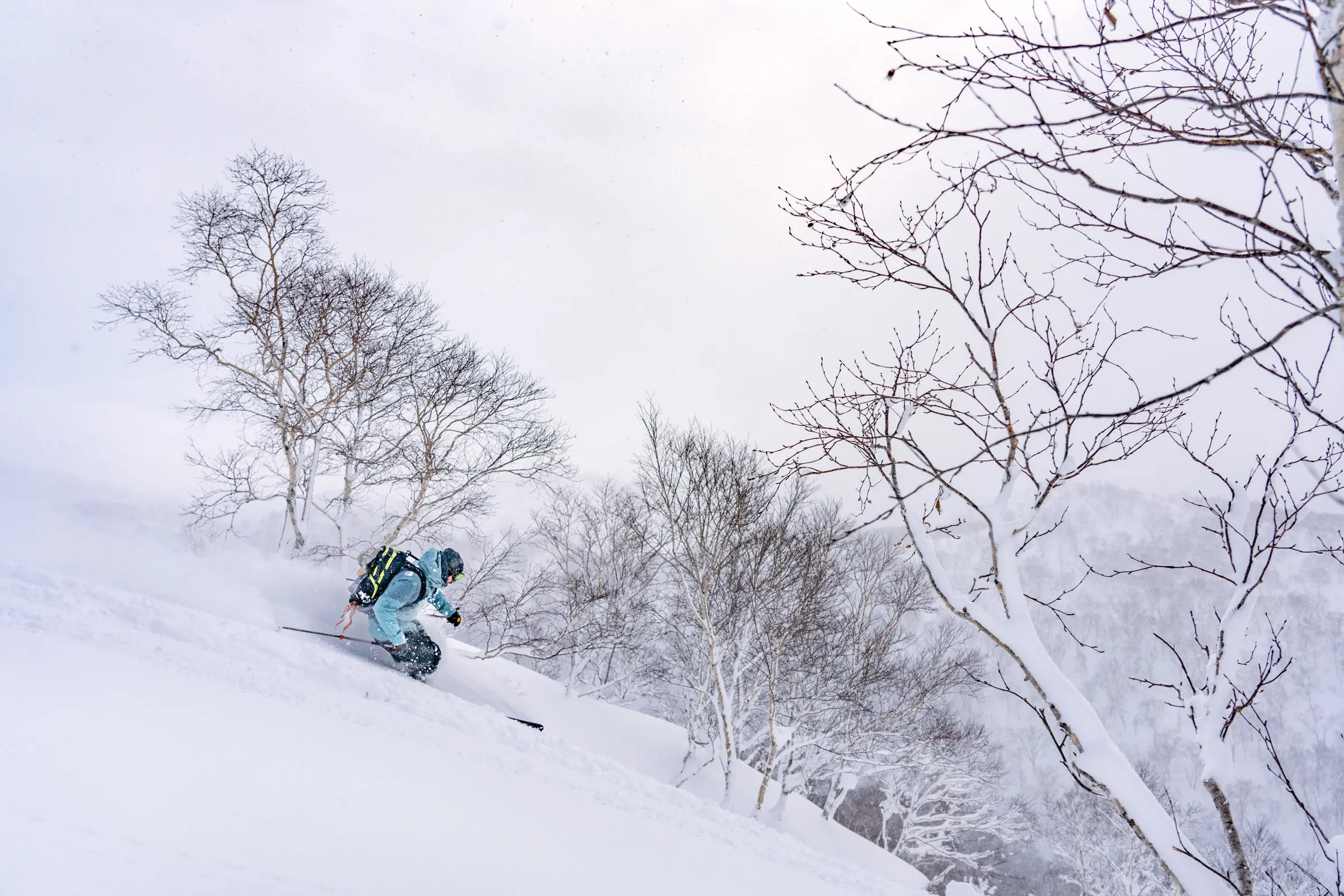



The summit of Mt. Niseko-Annupuri sits at a relatively lofty 4,292 feet. If you have avalanche gear and are willing to hike for 20-ish minutes up the several hundred-foot bootpack, 2,000-vert-plus runs are at your fingertips in virtually all directions thanks to the shape of the mountain.
You can ski off the flanks back toward Hanozono, or rip the open bowl back into the resort. “Kozan No Sawa,” a surprisingly steep back bowl, wraps back to Annupuri, and it was the highlight of my time in Niseko United’s backcountry. Or, check out Kita Shamen — which does require a hike back out. Tip: use Fat Maps and check the “Freeride Skiing” activity box. You’ll be able to see 3D mapping of popular lines.
There is so much terrain to explore off the summit of Mt. Niseko-Annupuri that it can be overwhelming, especially on your first trip. The same can be said regarding the in-bounds terrain at Niseko United. There are four resorts, after all! Whether you’re interested in exploring in-bounds, out-of-bounds, or a bit of both, here’s a helpful hack: go with a knowledgeable guide who knows the complex terrain.
Ski and snowboard shop Rhythm has a program called “Rhythm Rides” through which you can book an in-bounds guide, a sidecountry guide, or a skintrack companion. In fact, Rhythm Rides guides are often the same folks who lead evoTrips in Niseko, as Rhythm was recently acquired by evo in 2022.
I spent a few days with a guide, Joaquin Cespedes from South America, during our Niseko trip last winter. He got us into Kozan No Sawa, which provided some of the best turns of the trip, in addition to many other lesser-known nooks and crannies.
Annupuri
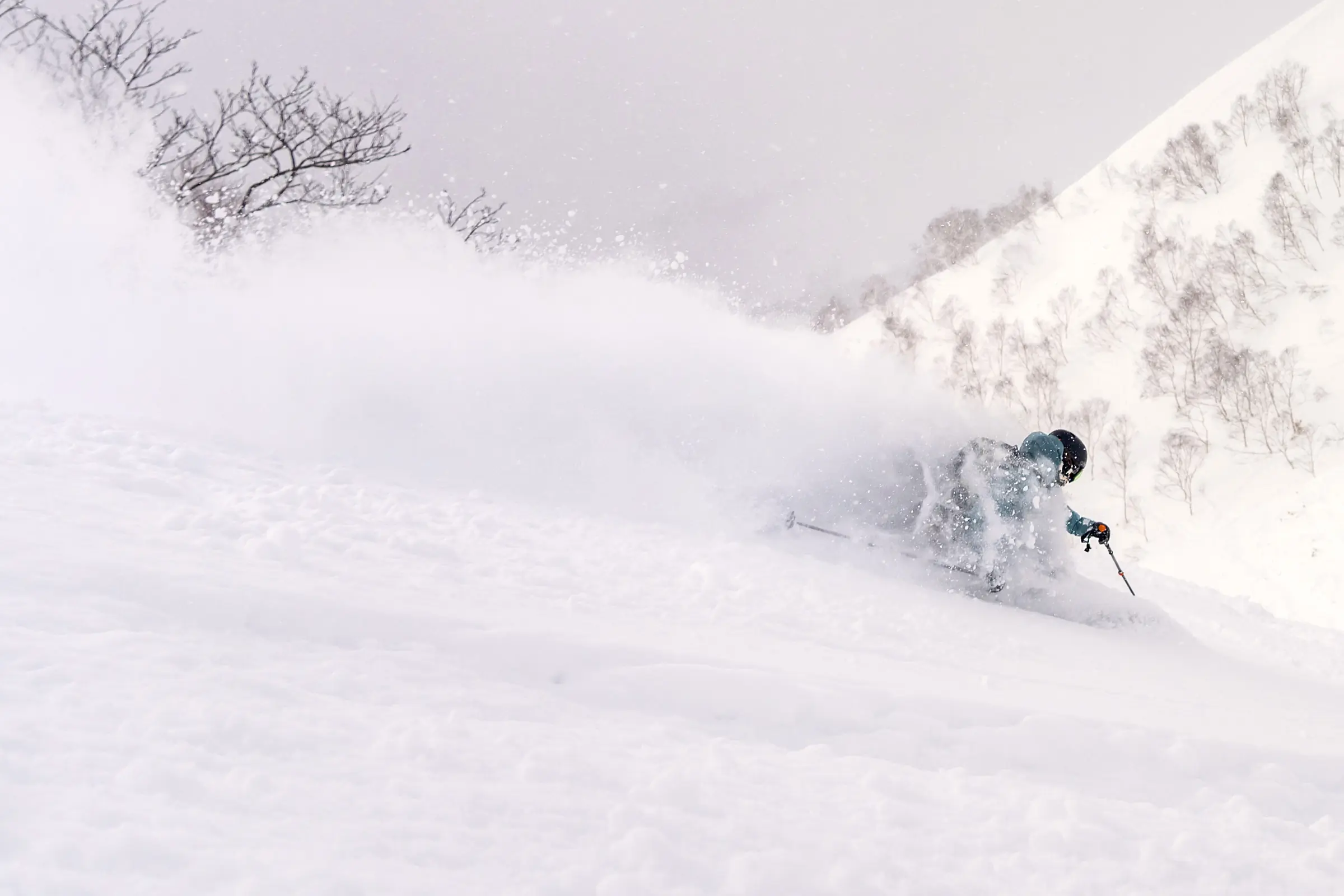



Opposite Hanozono and the furthest looker’s left resort of Niseko United is Annupuri, named, of course, for the mighty peak that makes all of this magic possible. The upper mountain of Annupuri isn’t particularly challenging for the competent skier, but beginners and families may want to cruise the more approachable lower mountain.
Backcountry-bound skiers and boarders will be eager to jet up to the upper mountain to poke out of gates G1, G2, and G8, but there’s a distraction on the way up: G7. Located just off the top of the Jumbo Pair Lift #2, the glades accessed from G7 are visible from the Annupuri Gondola as well as several lifts. This stash is too tempting to pass up on a powder day, although its extreme visibility does mean it’s ransacked quite quickly. Our advice? Hit it once or twice before venturing further afield.
While it’s possible for sidecountry rippers to explore the gladed flanks of Annupuri without much hiking, if you hike up and out of the G2 gate for approximately 20 minutes, you’ll have access to drool-worthy back bowls.
Moiwa Resort
There’s a fifth resort on Mt. Niseko-Annupuri: Moiwa, located left of Annupuri. It’s low-key, independently owned, and your Mountain Collective or Ikon Pass won’t work there. And, Moiwa doesn’t have many lifts and isn’t nearly as big as its neighbor. All that said, it’s worth checking out for a day if you have a longer trip planned — especially if you think you’ll use all seven Niseko United days (on the Ikon Pass).
If you don’t want to check out Moiwa but want a taste of the terrain, you can check out the backcountry between Annupuri and Moiwa before catching the cat track back to base.
Niseko Lifts and Access
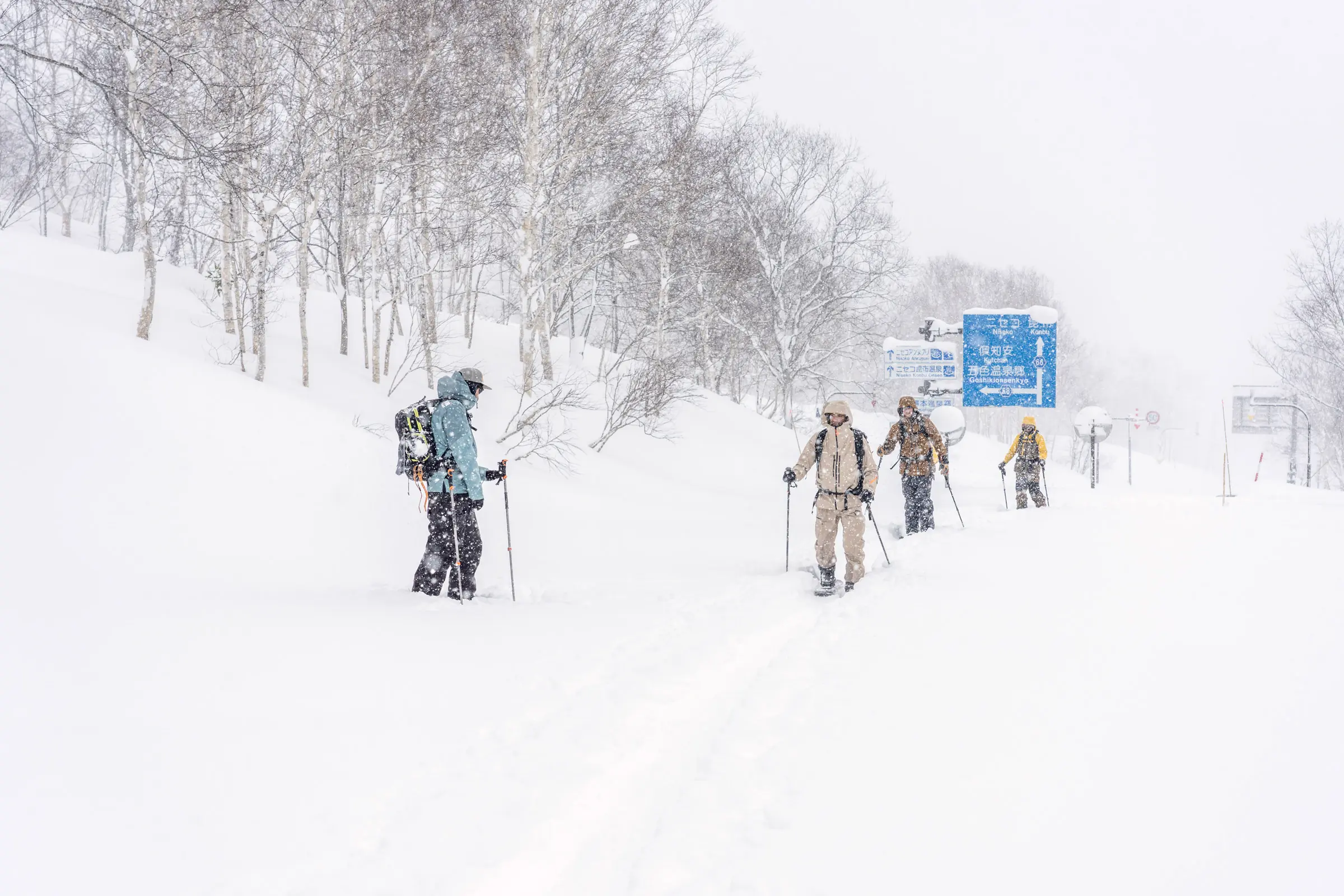



Many of Niseko United’s lifts are “hooded,” meaning they’re equipped with plastic domes that help block cold, wind, and snow. On extra-frosty mornings, though, starting with the gondola is a pro move. The Niseko Gondola at Niseko Village is Niseko United’s longest lift, and it’s a go-to to maximize vert and minimize exposure to the elements on freezing powder days.
After stepping out of the gondola, advanced skiers can hug the gondola line for steeper pitches, or bump up on the Wonderland Chair, assuming it’s open, to push to the upper Annupuri area and check out gates G1, G2, and G8. Another option for the deep-seeking powderhound if the upper mountain lifts are cranking: the aptly named “Snorkel” run, a shorter but semi-steep shot that comes back to the top of the gondola.
Beginners and families, on the other hand, can make the most of the Niseko Village gondola, too. If you want to take it mellow, exit the gondola and cut skier’s right, and then lazily zig-zag beneath Country Road Chair. The green runs on the looker’s left side of Niseko Village are fairly isolated, meaning you won’t have too many speed demons zooming by, and there are still fun glades on tap, making it a fantastic zone to make memories with groms learning to ski trees.
Additional Resorts and Backcountry Opps
While Niseko United is no doubt the mountain you’ll be frequenting if you’re heading to this zone, don’t forget, Japan has a mind-boggling number of ski resorts per capita.
Within an hour or so drive and still west of Sapporo, you can also hit up Rusutsu and Kiroro for in-bounds pow and lift-accessed backcountry, or the equally pow-filled northernmost Furano. Looking for close-by cat-skiing and heli options? Check out Hokkaido Backcountry Club. This guide service offers everything from touring day trips to avalanche courses if you’re looking for a certified backcountry guide.
Backcountry Touring Zones Near Niseko
Our favorite way to make the most of a ski trip to Japan is through lift-accessed backcountry or sidecountry exploration. Thanks to the gate systems, that’s probably the best way to maximize your time, vert, and powder. However, there are plenty of opportunities for human-powered touring away from crowded resorts, too. Here are a couple of favorites:
Mt. Yotei
Assuming you have a day or two of clear skies, you can’t help but stare at this monstrous volcano. It sits across the valley from Mt. Niseko-Annupuri, and shredding it is high on any backcountry skier’s bucket list. Touring options include surfing the lower treed slopes, or, in primo weather and avalanche conditions, skiing off the summit or even into the crater itself.
Roadside Attractions
Many of our favorite pillow lines and backcountry spots were on nondescript slopes found just on the side of the road while exploring Niseko and the surrounding zones. To make the most of these roadside attractions, rent a car!
Be careful, though, as hitting avalanche barriers can result in confrontations with the cops. If you’re looking for more inspiration in the backcountry department, check out Rhythm’s backcountry guide.
Backcountry Safety in Japan
Avalanche Forecasting
If you’re coming from a backcountry hub like California, Colorado, or Utah, you’re likely used to reading detailed, professional, and trustworthy avalanche forecasting. When arriving in Niseko, that isn’t a given. There is a decent avalanche forecast, available here, but it is limited in scope and translated. As such, it’s especially important to keep your wits about you, and be prepared to make your own avalanche observations and decisions.
Mind the Gates
The amount of skiers and snowboarders exiting the gates on a powder day without avalanche safety gear is mind-boggling. Once you exit the gates, you’re on your own. Be equipped with avalanche safety gear, know how to use it, and don’t exit the gates solo.
Guiding Certifications
In the U.S., it’s rare to find ski guides without a certain level of avalanche safety education and certifications. In Japan, you’ll find everything from highly certified guides to ski instructors with backcountry experience leading folks into the backcountry. As such, it is important to do the following:
- Be a competent, educated, and alert backcountry traveler capable of making your own observations and decisions.
- Avoid the so-called “expert halo,” or blindly trusting guides because they’re perceived to be more experienced than you. Speak up and communicate with your group. Don’t be afraid to ask questions or voice concerns.
- Research your guide or communicate respectfully with your guide on their education, experience, and certifications. They might be experienced with the zone, but their formal avalanche education might be less extensive than desired (or assumed).
If you’re uncomfortable exploring the backcountry with noncertified guides, more power to you. There are accredited guides in the region; you just have to look for them.
Where to Rent & Shop for Gear
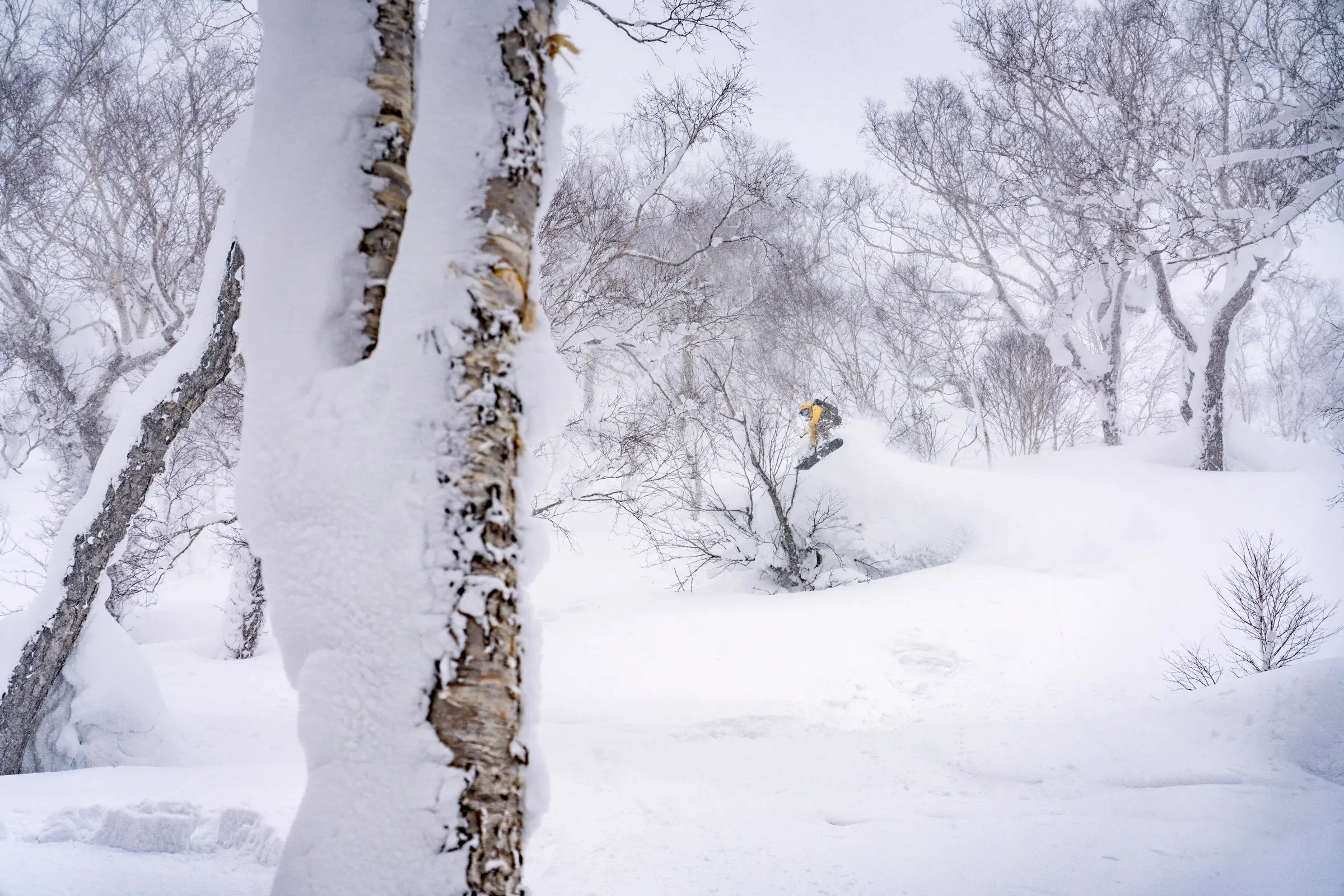



If you’re looking to rent powder skis or check out a swallowtail snowboard that can handle Japan’s fabled deep snow, look no further than Rhythm. The shop has multiple Niseko locations, including two stores in Hirafu, and multiple service centers within nearby hotels too.
In addition to a fleet of rentals, the shop is stacked with everything you need to make the most of a Japan shred trip, including outerwear, base layers, gloves, and more from local outfitter Oyuki. This makes more sense once I learned Oyuki was started by the founders of Rhythm. If you don’t need to buy or rent gear, Rhythm is worth a stop for its waxing and tuning services.
Other highly rated rental and ski shops in the Niseko four-resort area include YamaSport, Ski Rental Niseko, and, especially if you are looking for reasonable kid rentals or lessons, NBS Niseko Base Snowsports.
Where to Stay
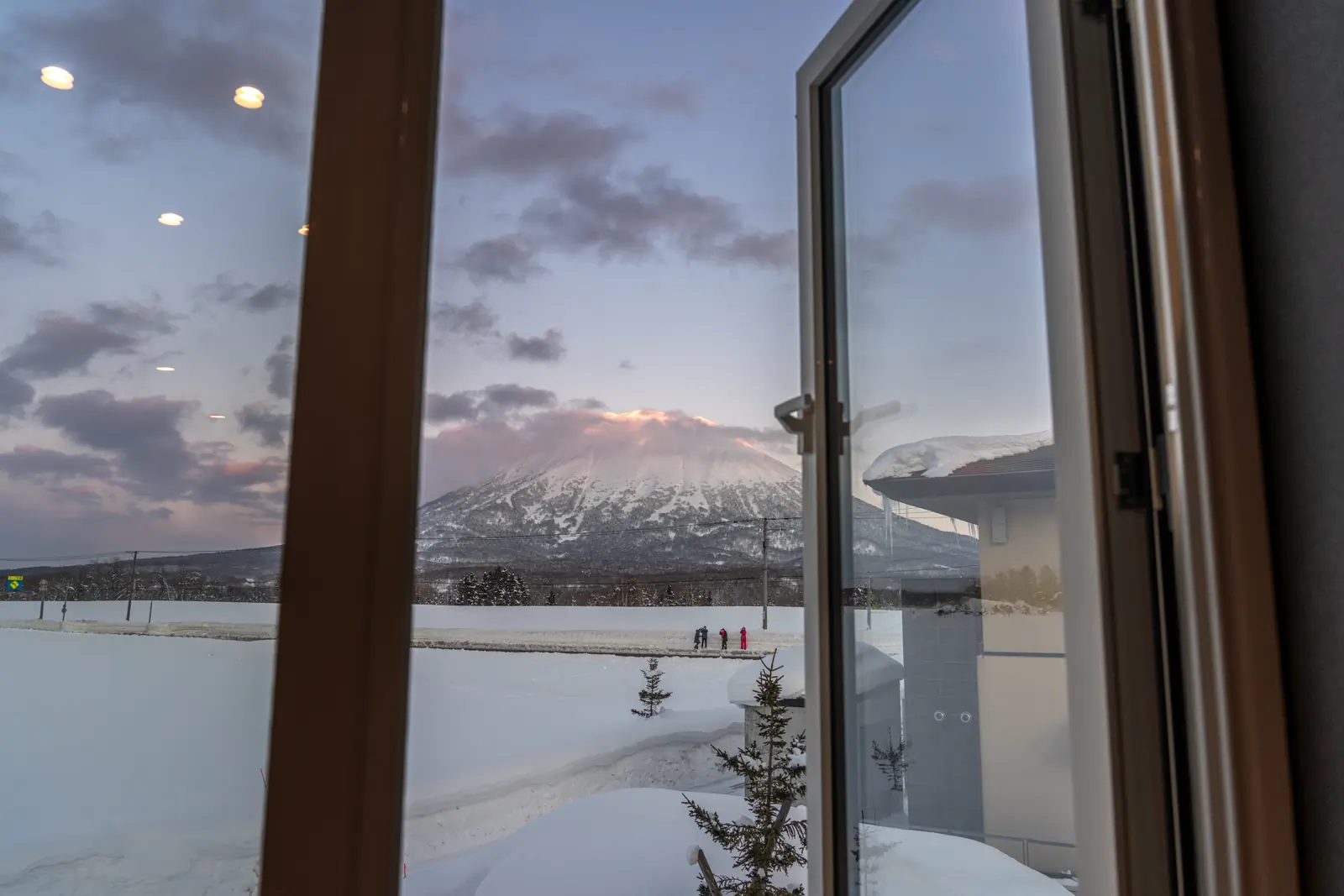



Miru Niseko
I spent the majority of last season’s Niseko trip at Miru, and it’s an ideal base camp for several reasons. First off, it’s not too pricey, with rooms available under $100 per night, at least in less busy shoulder seasons.
We stayed in the hotel itself, which was clean and comfortable, but there are also lodges available for bigger groups. The hotel is perfectly positioned between Niseko Village and Grand Hirafu, making it easy to drive to any of the Mt. Niseko-Annupuri resorts, including the farthest ones (Moiwa and Hanozono). Important note: if you don’t have a car, the hotel does have a shuttle.
Lastly, instead of driving to a traditional onsen after a long day of powder skiing, you can head back to Miru and take a dip in its indoor or outdoor pools.
Setsu
If you’re looking for luxury, set your sights on Setsu. Located at the base village of Grand Hirafu and a snowball’s throw from the chairlifts of Niseko United, Setsu is an ideal destination if you’re not renting a car.
Setsu is nothing short of jaw-dropping. The property melds Japanese art and architecture with modern style and accouterments. Our two-bedroom suite sported both the Western-style five-star hotel beds, as well as traditional tatami sleeping mats.
The location isn’t just ideal for chairlift access. The views of Mt. Yotei, the volcano that presides over Niseko, are also unparalleled. Last but not least, the onsen was the finest we’ve visited in Hokkaido so far — and that’s saying something. Setsu has four private onsens, which guests can book out (the first session is complimentary). This is especially good for couples and families, since most onsens are separated by gender. Booking the private onsen gives you an opportunity to enjoy the cultural experience and relaxing nature of the hot springs alongside your travel companions.
Landmark View Apartments
If you’re indulging in a longer stay or visiting Niseko with a bigger group, check out the Landmark View Apartments. These furnished apartments are extremely comfortable, and located within walking distance of the Grand Hirafu base area. You can roll out of bed and head straight to the lifts. Plus, the views of Mt. Yotei are phenomenal.
We stayed here during a 2-month ski trip to Japan. And as much as we love eating out, the kitchen made it extremely easy to whip up meals at our accommodations — especially great if you’re on a budget. We met so many travelers during that 2-month trip that we had an impromptu dinner party at the apartment, and it was one of many highlights of our Hokkaido adventures.
Where to Eat in Niseko, Japan
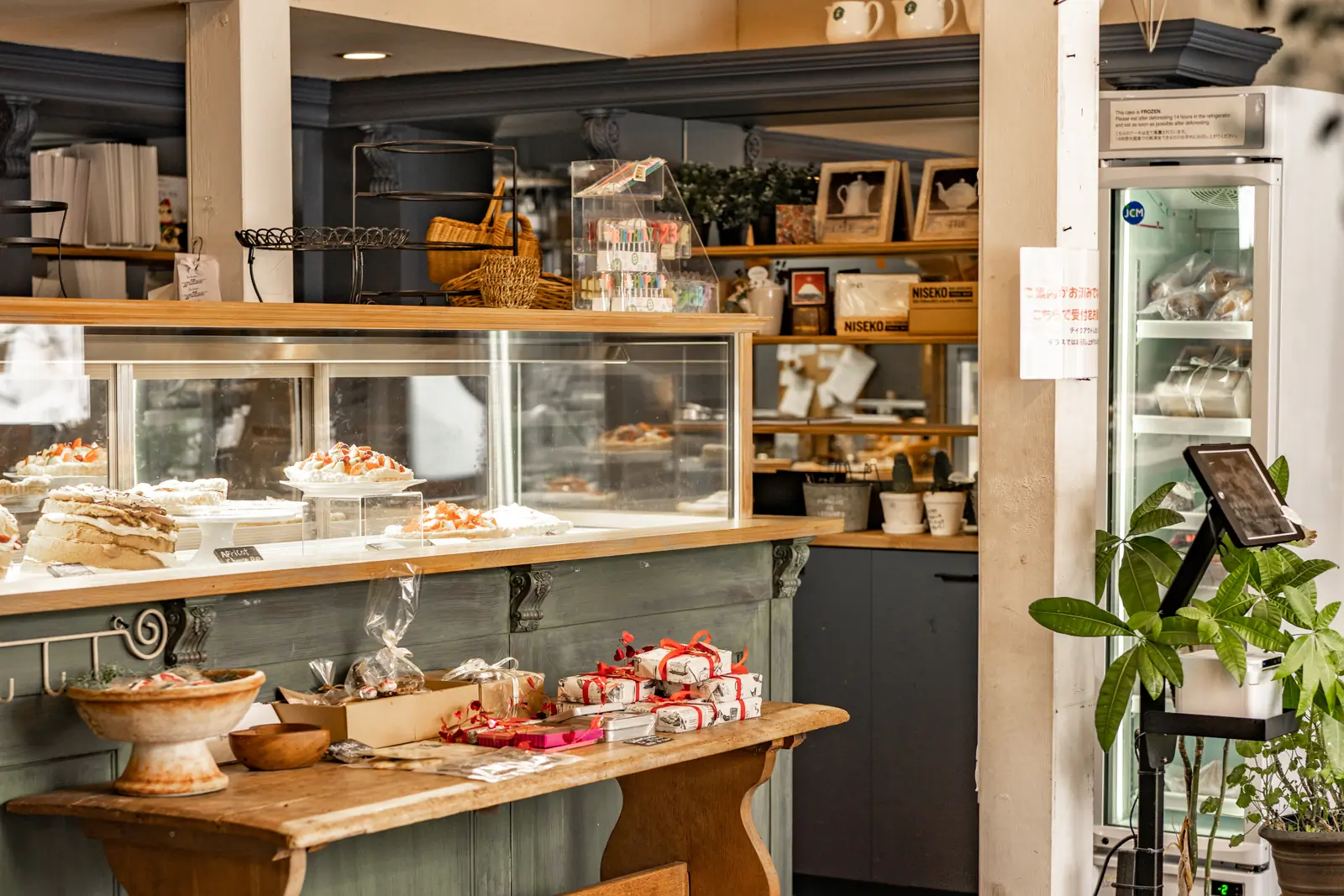



- Breakfast options: Graubünden. Graubünden goes by the moniker “the best cafe in Niseko.” A cozy cafe with top-notch cakes, quality coffee, and hearty breakfast sandwiches, and with vegan, gluten-free, hot and cold options.
- Affordable meals: Rookie’s Kitchen. While many restaurants in the base areas are on the pricey side, Rookie’s Kitchen, just outside of town, is affordable and delicious. If you’re looking to splurge, try the hot pot. Otherwise, the bibimbap is out of this world.
- Ramen: Afuri. Located on the ground floor of Setsu, Afuri is a famous ramen joint (with locations in PDX and L.A. if you’re on the hunt for soup closer to home). The cocktails are top tier, too!
- Izakaya dining: Jam. A cozy, Korean-inspired izakaya, Jam is jam-packed for a reason. Highlights include huge scallops sautéed in their shells over tabletop grills and a full bar of Japanese whiskeys.
- Food on the go: Convenience stores. Trust us — “gas station food” in Japan is very different from what you’re probably used to. Hit the food trucks in Grand Hirafu, or just pop into the convenience stores. 7-Eleven, Lawson, and SeicoMart all have surprisingly tasty and welcomingly affordable options available.
Don’t Want to Plan? Try a Guided Trip to Niseko
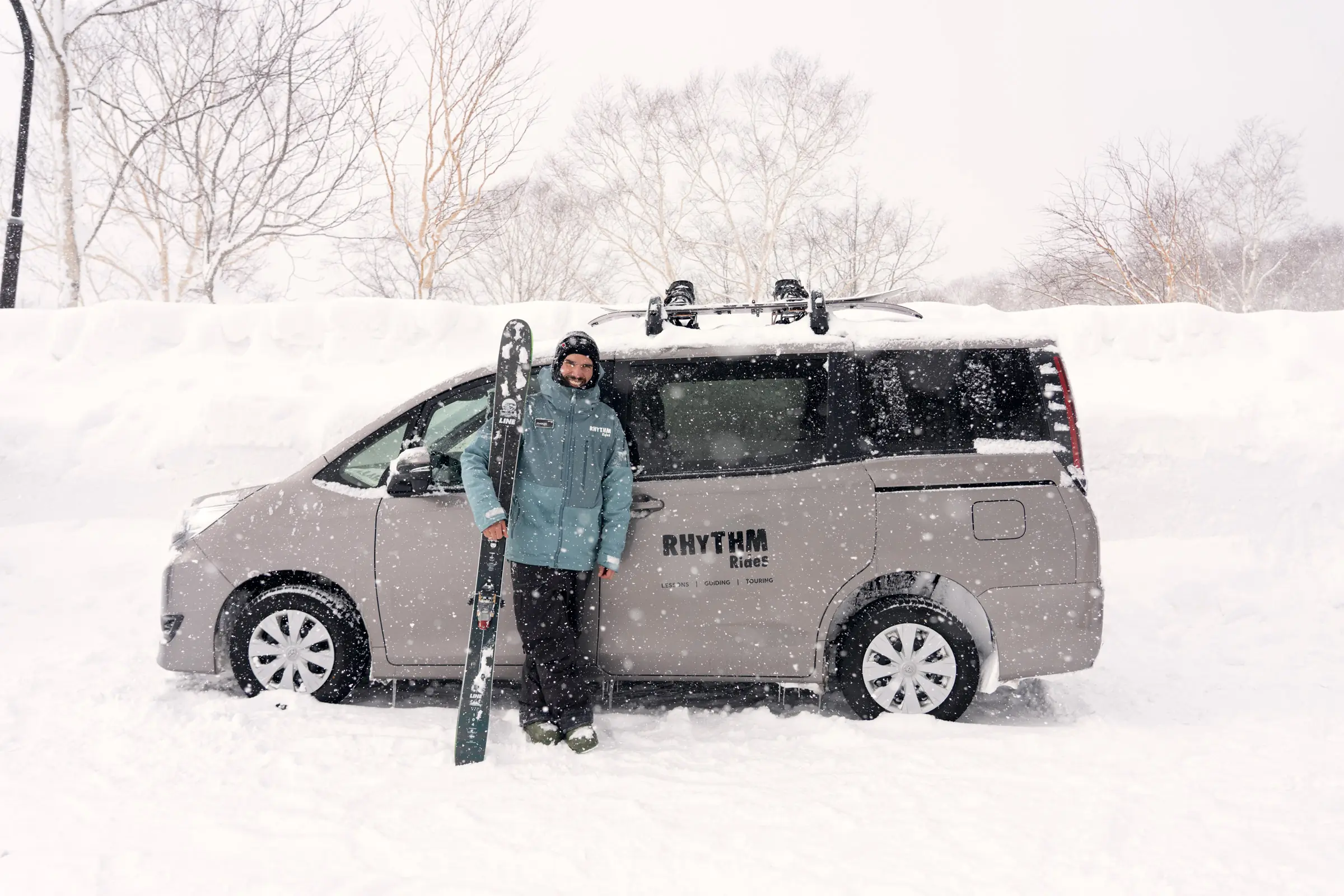



Finally, if you want to ski Japan but don’t want to handle the logistics yourself (even though we’ve got this guide and pro tips), there’s an easy solution: guided trips.
The PNW-based gear outfitter evo offers a range of trips, including ski and snowboard trips to both mainland Japan and Hokkaido. Evo’s Niseko trips are a week long and fully guided. They cover lift tickets (you’ll get a discount if you already have an Ikon pass), lodging, and meals. They also include an optional backcountry day and a potential day trip to nearby resorts Rusutsu or Kiroro (big value here, as car rentals are pricey).
I tagged along on a Niseko evo trip last winter, and it impressed me. It’s a smart way to travel, especially if you’re on your first trip to Japan or are rolling solo. If navigating new resorts and Japanese culture sounds overwhelming, consider booking with an all-inclusive guided trip service like evo.
Have Fun in Niseko!
I hope this helps get any thoughts about a ski trip to Niseko, Hokkaido, Japan well underway. Several GearJunkie writers and editors have experienced Niseko skiing at different points in the season. We belive this is truly the best roadmap you’ll get in one place.
Happy skiing!
